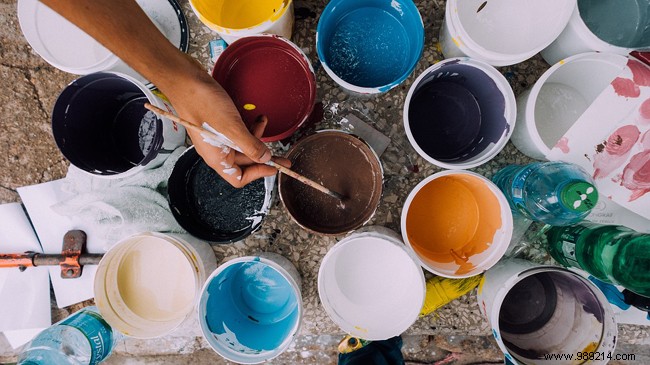To renovate the colors of a wooden, tiled, stone or even concrete support, epoxy paint remains a safe bet. Very resistant and offering a taut and smooth finish, it will give a new look to all interiors.
Epoxy paint belongs to the range of oil paints. This product consists of two essential ingredients:a base and a hardener. When this base composed of epoxy polymer binder is combined with the second ingredient, a chemical reaction occurs and makes it possible to obtain an ultra-resistant epoxy paint. But be careful, the mixture dries very quickly and if it is not applied quickly, it will harden in the paint pot, rendering it unusable. Note that it is possible to find three forms of epoxy paint on the market:the solid base, the water base and the solvent base. However, the latter is becoming increasingly rare due to its high toxicity.

The biggest advantage attributed to epoxy paint is its unparalleled resistance. It is not afraid of scratches, impacts or detergents. It can even be used to cover heavy traffic flooring. As long as the substrate is prepared in the rules of the art, the life of the paint will extend over several years. Another advantage:its high covering power which offers a homogeneous finish as well as its deep and smooth appearance with a mirror effect. In addition, it is a multi-media paint, usable on the ceiling, on the walls as well as on the floors. In the market, a wide range of colors are available and maintenance is relatively easy compared to water-based paints.
But the other side of the coin exists, epoxy paint has its limits. Its application is quite complex. The support must undergo major preparation work before receiving the first coats of paint, so that the latter is resistant.
In addition, the toxicity of the product is another inconvenience to take into account. At the time of application and drying, the room must be well ventilated, even several days after the application of the paint, because this paint emits a large quantity of volatile organic compounds (VOC) on application. The drying time is long. On the surface, it is fast, but it is the through-drying that lasts the longest. And for the outside, it also has its drawbacks since it fears UV. But if you still want to apply it outside, be sure to lay a special protective layer.
The work begins with the preparation of the support. Remove damaged and crumbly parts over the entire surface, then fill in any holes and repair imperfections. Then move on to the sanding step and dust it off. Finish the preparation by washing the support with soapy water and a sponge.
Be careful, never apply the paint on a surface that is still wet. Wait as long as it takes. Once this is done, read the manufacturer's instructions for use. Combine the two ingredients then apply immediately with a spray gun, brush or roller.